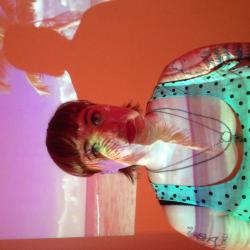New choreographies premiered at the Iceland Dance Company season opener
I have long held the view that here, as in many other places, dance is regarded as some niche misunderstood form of artistic expression that the masses have yet to embrace as a common thread in the cultural fabric. I might not go so far as to say that it’s fully embraced, but I was wrong. As I took my seat in the nearly sold out hall of the Reykjavík City Theatre for the Iceland Dance Company’s season premiere, it became clear that dance is very much accepted and appreciated here.
To hell with symbolism
The night began with the comically obtuse ‘It is not a metaphor’ by choreographer and company dancer Cameron Corbett, a direct and minimalist piece comprised of three dancers and pianist Tinna Þorsteinsdóttir onstage performing John Cage.
Dancers Aðalheiður Halldórsdóttir and Hannes Þór Egilsson were paired together in a taut, austere modernist pas-de-deux, performing rigidly calculated moves with stoic faces. Meanwhile, their severity kept getting interloped by Hjördís Lilja Örnólfsdóttir, who embodied a sort of gaping, enchanted outsider, whose subversion tactics were physically pushed away at every attempt to infiltrate the very serious duet.
As Hjördís’ attempts to crack into Aðalheiður and Hannes’ dance escalated, the more ludicrous and laughably repellent it got—after exiting stage right, she returned wildly humping a giant inflatable dolphin across the stage. The other dancers got fed up of being obstructed and finally abandoned her to sob for herself in the spotlight.
The blatant literalism of the show lived up to the title’s mission statement, while still caching a layer of subtle criticism of the relationship between dance and the public: the separation of us and them, the viewer versus dancer and the notion that dance itself has an impenetrable force-field that must be decoded in order to engage with it; the widely heard yet poorly justified rationale that one can’t like dance because one doesn’t understand it. In the end, the piece’s personification of the public gets what’s coming: Tinna leaves the piano, gently puts her hand on Hjördís’ shoulder, and shoves her into the dark.
Symbolism from Hel
As the intermission ended, a low guttural rumbling started up from some hidden source. (True story: I thought it was an earthquake and when I got home I found out there had incidentally been an earthquake.) These, however, were the birth-rattles of French choreographer Jérôme Delbey’s Norse mythology-inspired piece, ‘Let Hel hold what she has.’ In contrast to the piece that preceded it, this much longer number was swaddled in heavy tapestries of metaphor and ambiguity, complex arrangement and character distribution and general grandeur.
Even before most of the audience had noticed the piece beginning, with Arna Sif Gunnarsdóttir as the snake-child of Loki slithering across the stage in front of the curtain, a tone of grimy harshness and bizarre brutality was set. The curtain suddenly raised and exposed a scene that could have come from Game of Thrones BDSM/Otherkin slash-fiction—Cameron Corbett playing Loki was being subjected to punishment by poison at the hands of a bare-chested raven-man, with the rest of the cast of gods and monsters frigidly holding court.
The piece unfolded in a sort of Lynchian translation of the Eddas, the setting resembling a Norse ‘Black Lodge’ with large, dark expanses of empty stage-space, grotesquely oversized props for dance partners (Steve Lorenz as Óðinn had his way with a conference table turned on its side), and the bleak absurdist scoring of Anna Þorvaldsdóttir. The majority cast of painfully beautiful and lithe performers were creepily bookended by the aged hermaphrodite Ýmir (Ingólfur Björn Sigurðsson) and child-god Baldur (Nökkvi Helgason), who kills the former after its manhood has been robbed and eaten.
Eleven dancers represented sixteen mythological characters, making it nearly impossible but also moot to keep track. The title character Hel (also performed by Arna Sif) ended up being fairly minor though and didn’t really seem to hold anything to begin with. In fact, the piece felt primarily symbolic rather than story-based and given its overall beauty, it held its own just fine.
—
Next Up On The Dance Stage
The Iceland Dance Company will premiere their next show ‘On New Ground’ on November 22 at the Reykjavík City Theatre. It is a showcase of four fresh new pieces by first-time choreographers for the company:
Til by Frank Fannar Pedersen
The piece depicts a woman struggling between love and loss, caught in the blur between the past and the present.
Ótta by Ásgeir Helgi Magnússon, Hjördís Lilja Örnólfsdóttir and Unnur Elísabet Gunnarsdóttir
Based on an Old Icelandic word for the extremely early morning hours when few people are awake, the piece explores unrest, disquiet and how dreams replace realities.
And then never again by Steve Lorenz
Focused on transition and defining moments in life, this piece explores the changes that can never go back.
Allegro con Brio by Karl Friðrik Hjaltason
It is a performance dealing with the struggle to accept eternity and the fluidity of time in relation to human emotion.
Buy subscriptions, t-shirts and more from our shop right here!
















